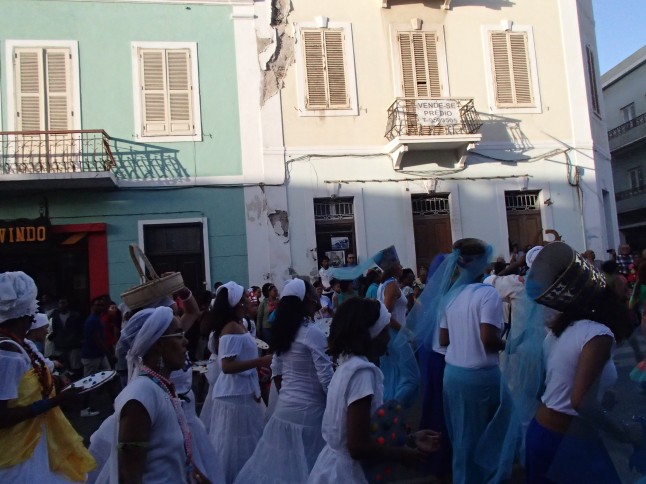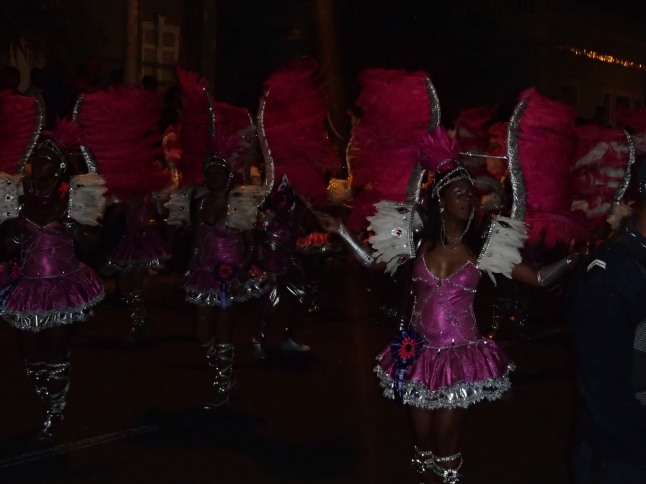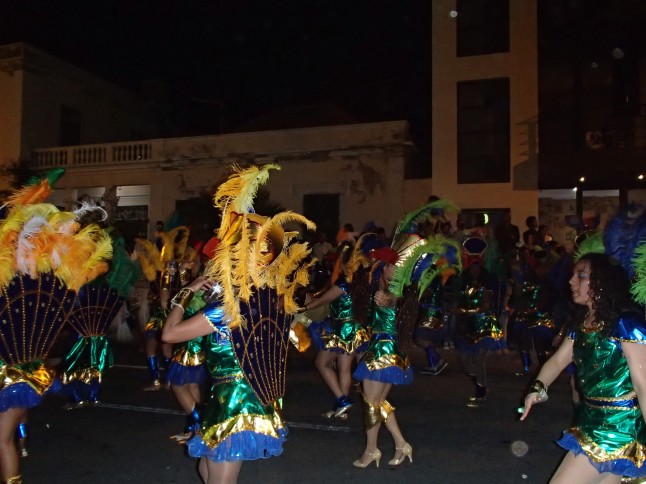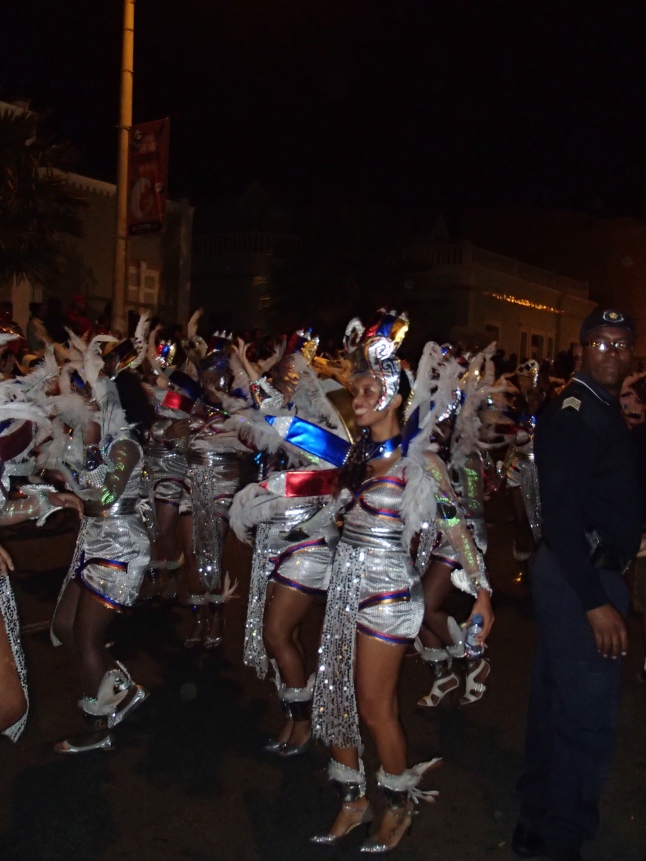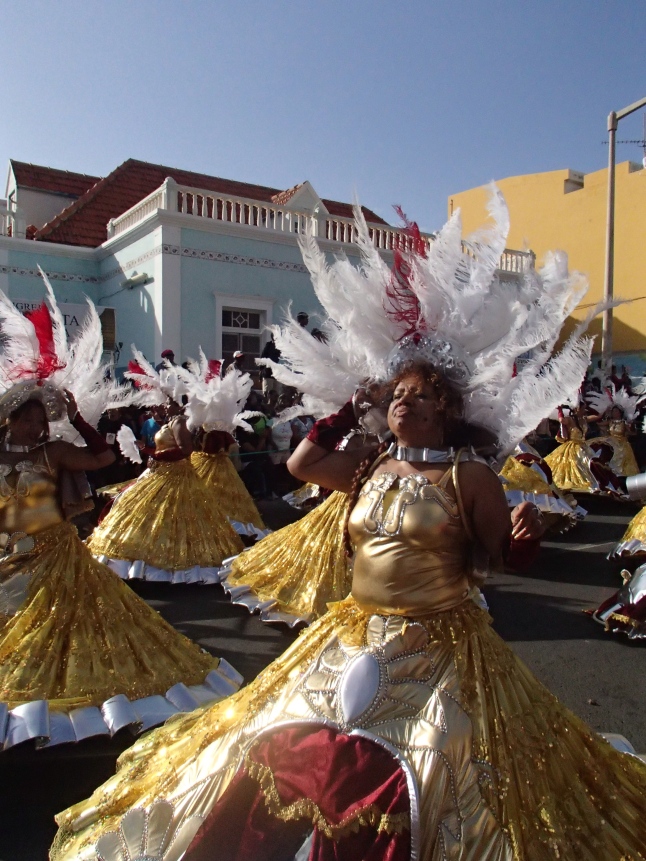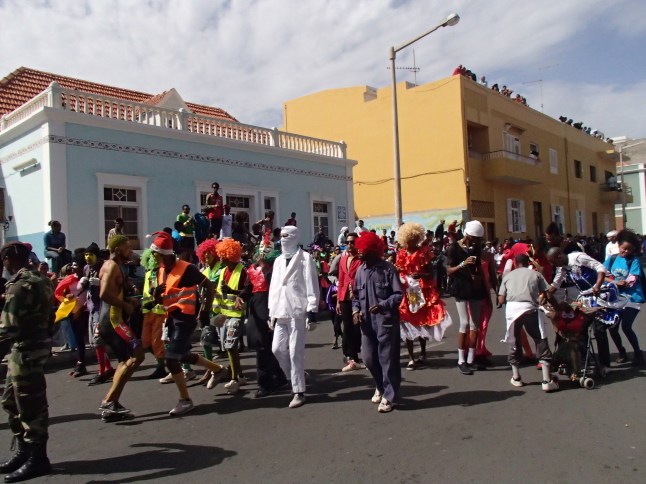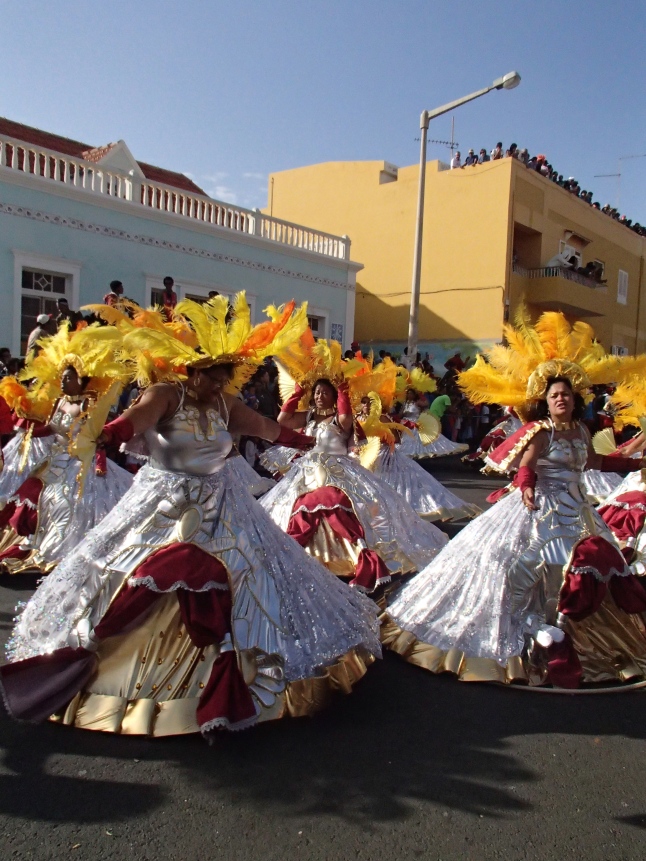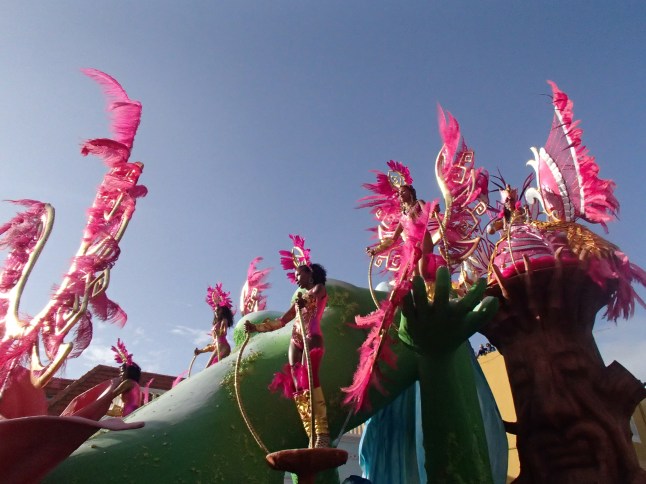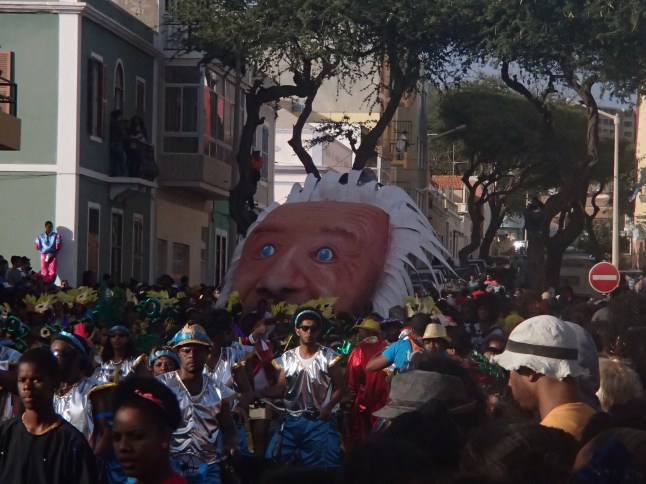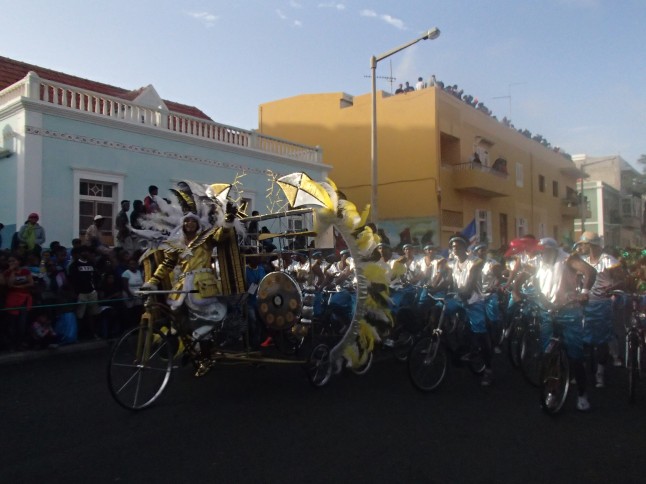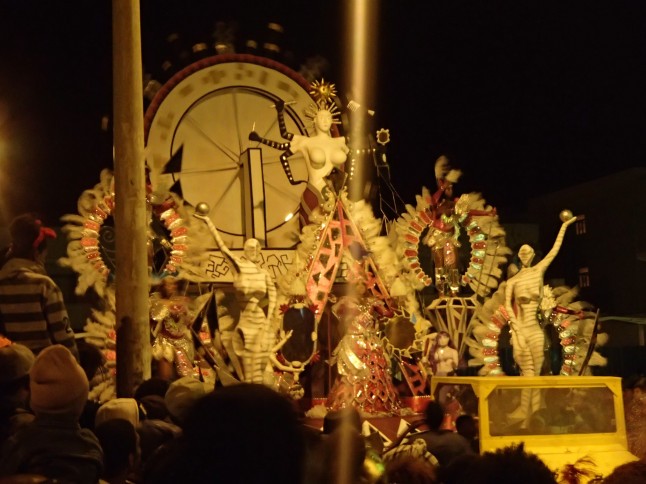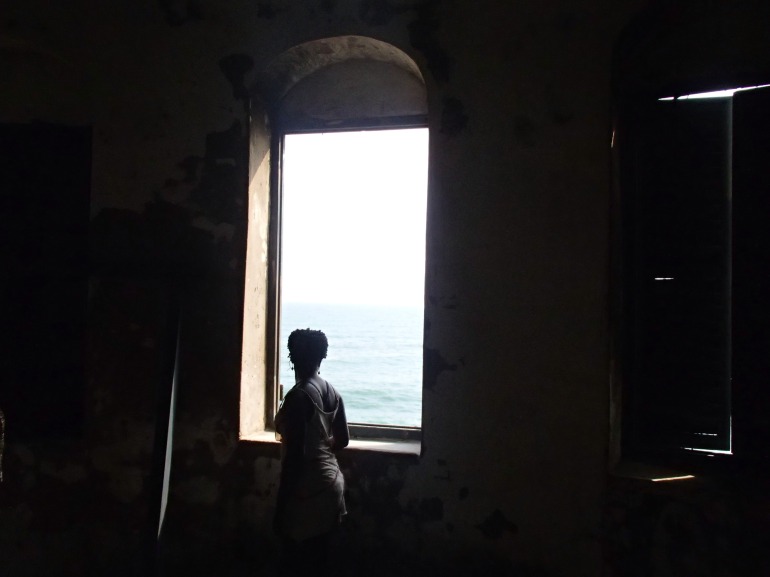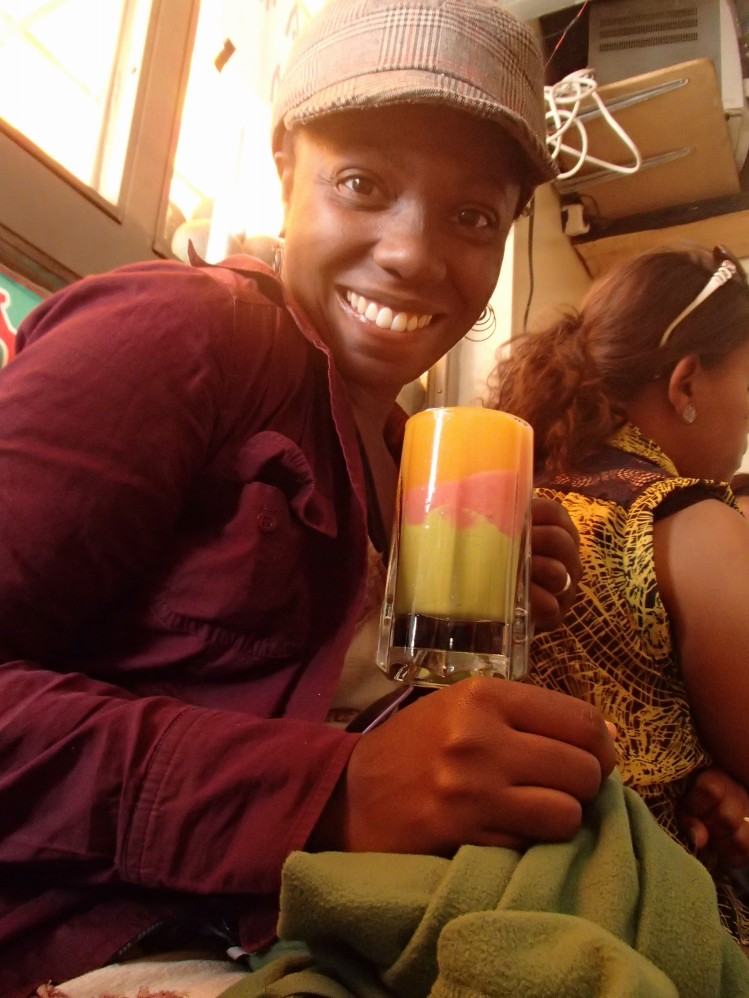After Carnival in Mindelo, we got an aluguer (collective taxi) to another of Cape Verde’s islands, Santo Antao. Our destination was the sleepy town, Ponto do Sol, which is defined in my memory by the atmospheric coast it rests on. The water seemed to brood like the sky before a storm. We spent an afternoon wandering through the streets which were mostly empty, but only ended up returning to the water to watch the dramatic waves crash against the rocks.
We were introduced to ponche, Cape Verde’s signature drink. Ponche is a mix of grogue and the fresh juice of whichever fruit you choose, plus lime and molasses. Common flavors are mango, coconut, and passion fruit. You can also have it with honey or chocolate. The consistency is thick and it tastes like a dessert. The drinks are poured small and they’re really inexpensive—clearly designed to try multiple flavors!
There was a clear path behind our hotel so we set out for a short walk on our second day. The views of the ocean and neighboring towns were so splendid that we continued walking past the time we intended. Before we knew it, we had been walking for three hours. It made more sense to continue to a town that was at least another two hours away so that we could get a taxi back. Because we thought we were only going a short walk, we didn’t bring enough money for both lunch and a taxi. So we continued our hike, taking in the scenery, but despite my best efforts, I was getting increasingly irritable because of hunger and exhaustion. I was hangry. We were between a stunningly beautiful “rock and a hard place.” The landscape changed unexpectedly at nearly every turn—from views of the ocean to wide, open hilly fields with ruins of bygone structures. Our bodies continued moving despite the ardor, and when we reached the town with the taxi we hustled to get the last taxi of the day to Ponto do Sol. Eight hours later, at our final destination, we couldn’t help but marvel at our unexpected adventure.
The next day we visited a town called Tarrafal (one of three different towns called Tarrafal that we would visit in Cape Verde!). The town rests at the foot of a valley enclosed by steep terraced farms. The people dig stair steps into the mountains then plant farms in them. That way, they have steps that help them climb while they tend their gardens… which are planted in the steps! Brilliant and aesthetically pleasing! We could have hiked down into the valley but after the previous day’s incident, we both were happy to just ride the back of a truck in the open air.
The day was foggy with a slight chill. We walked through the town a bit and found ourselves at a guesthouse with a large variety of ponche. Naturally, I tried as many as I could! Then, I settled into one of the most mundane and peaceful parts of traveling—postcard writing. If you need proof that I am a closeted old person, there you have it. Nothing excites me more than some good ol’ postcard writing while I’m traveling.
One of the most amazing things about Cape Verde is the breathtaking variety of landscape. Almost twenty four hours after seeing the lush, green terraced farms, we were on the back of a truck with four Cape Verdeans and three tourists, going through dry, rocky, monochromatic terrain. We spent nearly two hours bumping along in the bed of a truck, watching the views of the ocean appear and disappear, with very little information about our destination.
We finally reached our second “Tarrafal,” a town that is essentially one road along the sea with less than one thousand inhabitants. There are no attractions other than the peaceful surroundings and the beautiful landscape. We spent the days wandering around and Mat played a hilarious game of petanque with some children. I cracked up watching him struggle to explain the rules, while the kids took shortcuts and played it their way.
Despite its insignificant size, Tarrafal is full of life. It rests along a beach of black sand. At night, the largest mountain shields out light from neighboring towns, so the stars are absolutely visible. No street lights and very little electricity anywhere to obstruct the view—I’ve never seen such a night sky.

this mountain shields out the light from neighboring towns making the stars gloriously visible at night
A large reason Tarrafal is known to outsiders is because of a German husband and wife team of sailors, who docked there on a sailing trip over ten years ago. They returned a few times before deciding to give up their life at sea to build a guesthouse and settle down. They have since created a life there celebrates simplicity. Everyday the husband of the couple prepares a hearty soup, fish, and maybe a salad. Guests come and eat what they like, but instead of paying each time they eat, they record what they consume in a little notebook. They pay their tab at the end of their time in Tarrafal. And then there were “sundowns”! Each evening the couple makes a pitcher of ponche and sets it out with glasses on a terrace near the sea. Anyone who cares to can stop and sit have a drink while watching the sunset. They call it “sundown.” The crowd is a nice mix of tourists and locals, all enjoying the free booze and the sunset. There was also a violinist in our group—a tourist from Seattle who came in the same truck as we did—so there was violin music too!
The next morning, we left Tarrafal before dawn. The stars were still in the sky and we felt so close to them riding once again in the bed of a truck. The air was cold so we bundled in our fleeces and windbreakers. We watched the sunrise over the mountains and the ocean as we entered town.
I know this sounds magical and beautiful and all that, but Cape Verde was a place of epic bad luck for us. My phone was stolen. Mat lost his wedding ring. Our flight reservations were mysteriously lost. On one long boat ride between islands, Mat had the worst sea-sickness that I (and some of the employees) have ever witnessed. We had little to no interaction with local people in Cape Verde. That was hard for me to get used to. We missed spending time in villages and the sincere exchanges we had with the people of continental West Africa (at this point: Benin, Togo, Ghana, and Nigeria). We didn’t do any planned hikes and though Cape Verde is famous for its scuba diving scene, it wasn’t diving season. We passed our days enjoying the beautiful landscapes, exploring towns by foot, eating street food, and giving ourselves a taste of daily life, which I was beginning to miss anyway. I celebrated my birthday by drinking ponche in a new town and sending postcards (along with wedding thank yous!). We grilled fish under the stars and Mat whipped up a dessert. It was my first birthday in warm weather. I felt fabulous. We had only one week left in Cape Verde before going to Senegal, our last country in West Africa. I was beginning to taste finality in everything.














































